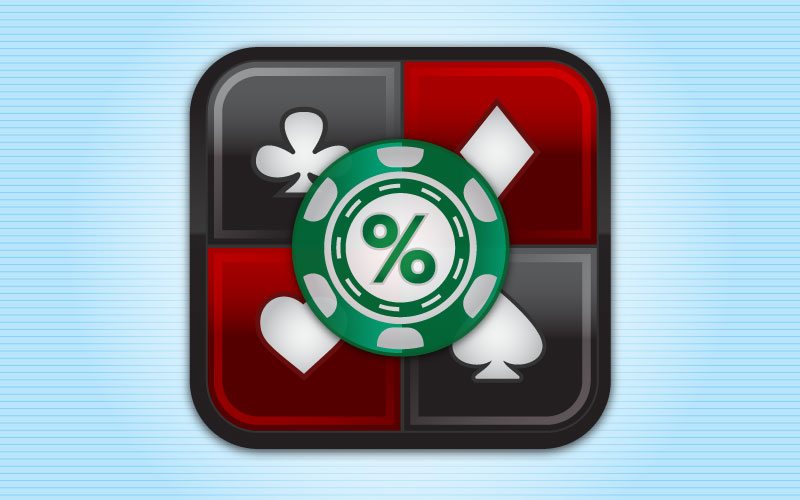One of the fastest ways to improve your game is to review your previous sessions. This is typically done through programs such as PokerTracker or Hold’em Manager which store your hand histories and break them down into hundreds of key statistics. If you are not currently using PokerTracker or Hold’em Manager you are missing out on a huge tool in improving your play. These programs will help players identify leaks, understand their opponents’ tendencies, and track results at different times, levels, and games. There can be a bit of an information overload when you first begin using these programs so keeping things simple will help you analyze your play. Players should look at key poker fundamentals, specific hand histories which gave them trouble, and a few other concepts which can help them take their games to the next level.
Poker Fundamentals
When reviewing your database or a certain session there are a few pre-flop fundamentals we want to explore. We know the money in poker tends to flow to the left. This means players who have position in pots tend to win more money than those who do not. Having a positional advantage will allow you to gain more information about your opponent’s hand thus giving you the ability to make better decisions throughout the hand. This begs the question, how do we use PokerTracker or Hold’em Manager to analyze positional awareness?
There are many statistics which show how many hands we are playing in later position versus earlier position and the blinds. In fact, in most databases there is an entire tab dedicated to showing the percentage of hands played pre-flop. This is a great tool in identifying a major leak in those new to the game, playing too many hands when out of position. Ideally we want to see a significant difference in the percentage of hands we’re playing from early position compared to later position. This number could be slightly skewed over the course of a single 500 hand session, but long term, over tens of thousands of hands, we should see a large disparity in our range from the cut-off and button vs. early position. There is no set in stone number and this will also be affected slightly in the games you play. For example, in Full-ring our early position range will be tighter than that in six-max. However, our button opening range in both games should be quite similar. If you open the position tab and see a major difference between your early position and late position VPIP and PFR you are on the right track! If you are playing just twice as many hands from the button as you are from UTG then you are either playing too tight in later position or way too loose in early position.
Another metric which can help us analyze our positional awareness is our Attempt to Steal Blinds statistic. This stat calculates the times we are folded to in late position and have the chance to open the pot. This number should ideally be quite high, as we have a great opportunity to either take down the blinds or even better, play a raised pot in position. A lot of players tend to just hope to take down the blinds in this spot, and while winning 1.5BBs is a good result with mediocre hands, it pales in comparison to our ability to make educated decisions post-flop in bigger pots. Again, there is no set in stone ATSB% which everyone should try to follow, but from the button anything under 50% is probably too tight. From the cut-off (the spot to the right of the button) we have to factor in how loose the player is to our left. If it is a tight regular we can go ahead and open our button range with out fear of being called or raised too often. If there happens to be a loose, aggressive, or good opponent on our left we are better off playing tight in that spot, and in general, finding a better seat and/or table.
A few other key stats to review are your VPIP and how it relates to your PFR. In general we want to err on the side of aggression in poker, both before the flop and after. If there is too big a gap between these two numbers we can assume we are playing quite passively or perhaps too loose. For Full Ring we should look to be somewhere between 12-18 VPIP and 8-14 PFR. For 6-max, much looser, somewhere in the 18-28 VPIP and 14-24 PFR range. In each case, having our VPIP:PFR ratio in the 4:3 range is probably best, as in something like 16/12 for Full Ring and 24/18 for 6-max.
Hand History Reviews
First of all, if you do not have Pokerstove or a program like it, stop reading and download it now. This is by far and away the best free tool available to poker players today and should be used as much as possible. Pokerstove not only allows you to analyze equity hand vs. hand, but also allows you to do so hand vs. range, or even range vs. range. This can be quite beneficial in understanding not only how you fare against a specific hand but also how your hand or range stacks up against your opponent’s entire hand range.
Let’s look at a simple hand history and discuss how we might break it down with Pokerstove.
We are dealt XY and open from the cut-off. A tight player calls from the SB.
The flop is Jc 5c 4h, we bet, get check-raised, and we shove, getting called by the Small Blind. In the actual hand we end up holding Pocket Queens while our opponent has Pocket Fours. The board bricks out and we lose the pot. A short sighted person might feel they made a mistake, however, there is more to a single hand history than just what each player hand in this specific case. Let’s look at the hands our opponent might check-raise and stack-off with here:
44, 55, ATcc, KQcc, AJs
and now the range we will bet and stack-off with
JJ+, 44, 55, A2cc+, 67cc, 68cc, 78cc
These ranges are fairly standard. Our opponent probably 3bets JJ+ as well as AK and AQ suited. We also probably just call a flop check-raise with hands like Jx thus creating a fairly strong stack-off range full of sets, overpairs, and strong combination draws. In the actual hand we only have 10.7% equity on the flop with Pocket Queens, but once we break down our range vs. our opponents we now have 44% equity, which after betting and getting raised is enough to put the money in the middle. Factor in we could have been getting check-raised bluffed, and we have more than enough equity to stack-off.
This is an advanced concept which was first presented to the online poker world by high-stakes professional Phil “OMGClayAiken” Galfond. Galfond termed this “G-Bucks” and it was an eye opening explanation of how to break down certain situations in poker. Instead of looking at hand vs. hand spots, we should be looking at them as range vs. range. So the next time you play a hand where you seemingly got the money in really bad make sure you just didn’t happen to have the worst hand in your range while your opponent had the best hand in his. Understanding your g-bucks in certain situations will allow you to more confidently proceed in the hand whether that happens to be a fold, call, or raise.
Analyzing Opponent’s Tendencies
Once you move up in stakes and the player pool at each level inevitably shrinks it will be quite profitable and worthy of your time to look at players in your database against who you have played many hands with. Break down their games, looking for any exploitable tendencies and then take notes on them. Check to see if they are quite tight from the blinds, allowing you to open up your stealing ranges. Perhaps they are too loose pre-flop but tend to fold to a lot of continuation bets after the flop. Some players might like to check-raise a lot of flops, to which we can adjust by checking back marginal hands with showdown value or feel more comfortable in bet/3-betting on the flop. A lot of databases will allow you to take notes while reviewing your opponents and then export them to the poker room of your choosing. This can be quite a big help the next time you are involved in a big pot with a regular. Instead of playing a guessing game about their range you can make a much more informed decision.
You can also use the database to analyze the biggest winners at your stakes and figure out what they might be doing that you currently are not. Do they have different showdown statistics? Are they tighter in middle position? Is their 3-bet PF percentage from the blinds much higher than yours? There is no shame in looking at their tendencies and applying some of them to your game. The best players in the world got there by always striving to be better; this included studying the game, their opponents, and any other factor which might help them improve their play.
Sessions reviews can be a big help in taking your game to the next level. You do not have to pour over each and every hand history, statistic, or player, but you should be taking some time each and every day to analyze key situations, difficult opponents, and your fundamental statistics to make sure you are on the right track to becoming a better poker player.
Submit your review | |










